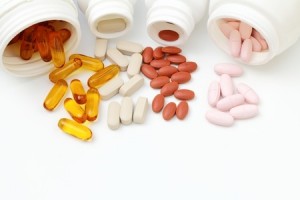
Photo Credit: The medications a doctor prescribes may not always safe. In fact, lax drug safety standards and questionable marketing practices by drug companies have opened the door to liability and class action lawsuits. So how can a person know if the medications they are taking are safe? And if a drug is found to be unsafe, what recourse does a person have against the maker of the unsafe drug? In many cases, consumers of unsafe drugs can pursue civil class action litigation against the drug manufacturer, seeking both compensatory and punitive damages. For instance, in one of the largest health care fraud settlements in U.S. history, Johnson & Johnson agreed to pay more than $2.2 billion to resolve allegations that the company committed off-label marketing practices in connection its prescription drugs Risperdal, Invega, and Natrecor. Unfortunately, however, in some cases, these damages are insufficient to prevent companies from continuing to make unsafe products. While the purpose of punitive damages is to punish a defendant and deter future wrongdoing, many pharmaceutical companies have become so big that punitive damages barely make a dent in their bottom line, much less make it financially detrimental to make shoddy products. As explained in an article in Hufftington Post,
“J&J’s misconduct would have remained largely hidden had it not been for lawsuits against the company by those injured or made sick. Indeed, this case illustrates one of the most important functions of civil lawsuits: public disclosure of information. Yet the article also crystalizes how one of the other critical functions of litigation – deterrence of unsafe practices – seems to have been upended. These days, a company making $20.6 billion can, ‘break the rules with relative impunity, or at least without suffering the kind of punishment that would actually hurt.'”
The article went on to state that:
“for a company ‘with before-tax profits of $20.6 billion for 2014, putting aside $500 million or even $1 billion a year over 15 years to cover payouts for … claims that might come along doesn’t put much of a dent in the company’s financials.’ One analyst ‘perhaps unintentionally echoing the view of one senior J&J lawyer” said, “It’s their cost of doing business.'”
As Joanne Doroshow with the Center for Justice and Democracy at the New York Law School points out, turning the threat of liability into a “cost of doing business” is incredibly dangerous to consumers and the public in general. For instance, a 1997 report titled Smoking Guns: Corporate Behavior and the Harmful Impact of a Punitive Damages Cap, showed just how often manufacturers engage in cost/benefit analyses when deciding whether to change harmful production practices or remove harmful products from the market. Unfortunately, 18 years after the report was issued, the problems still persist. Quite simply, caps on punitive damages make it more “cost-effective to pay victims and their families for any deaths or injuries caused by a defective product than design a safe product in the first instance or to correct a defect that has been discovered after the fact.” The Chicago medical malpractice lawyers at Steinberg, Goodman & Kalish are committed to protecting the public from dangerous medical products, including unsafe pharmaceuticals and defective medical devices. If you have been injured by an unsafe medicine or defective medical device, contact the Chicago medical malpractice lawyers at Steinberg, Goodman & Kalish at (312) 445-9084 to schedule a free consultation to discuss a possible product liability or medical malpractice claim. Source:
Steinberg Goodman & Kalish (www.sgklawyers.com) is dedicated to protecting victims and their families. We handle medical malpractice, product liability, personal injury, wrongful death, auto accidents, professional negligence, birth trauma, and railroad law matters. Contact us at (888) 325-7299 or (312) 445-9084.

